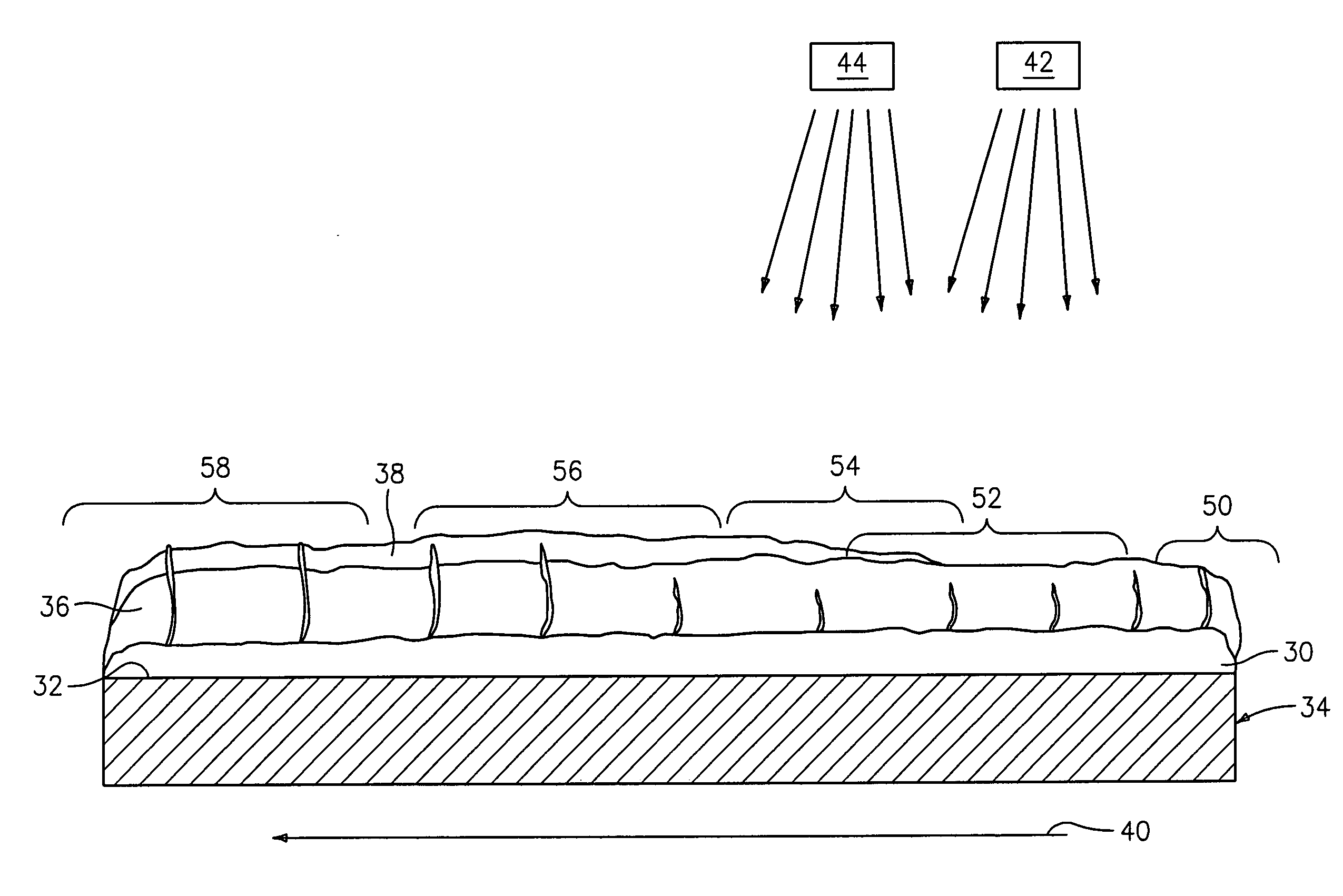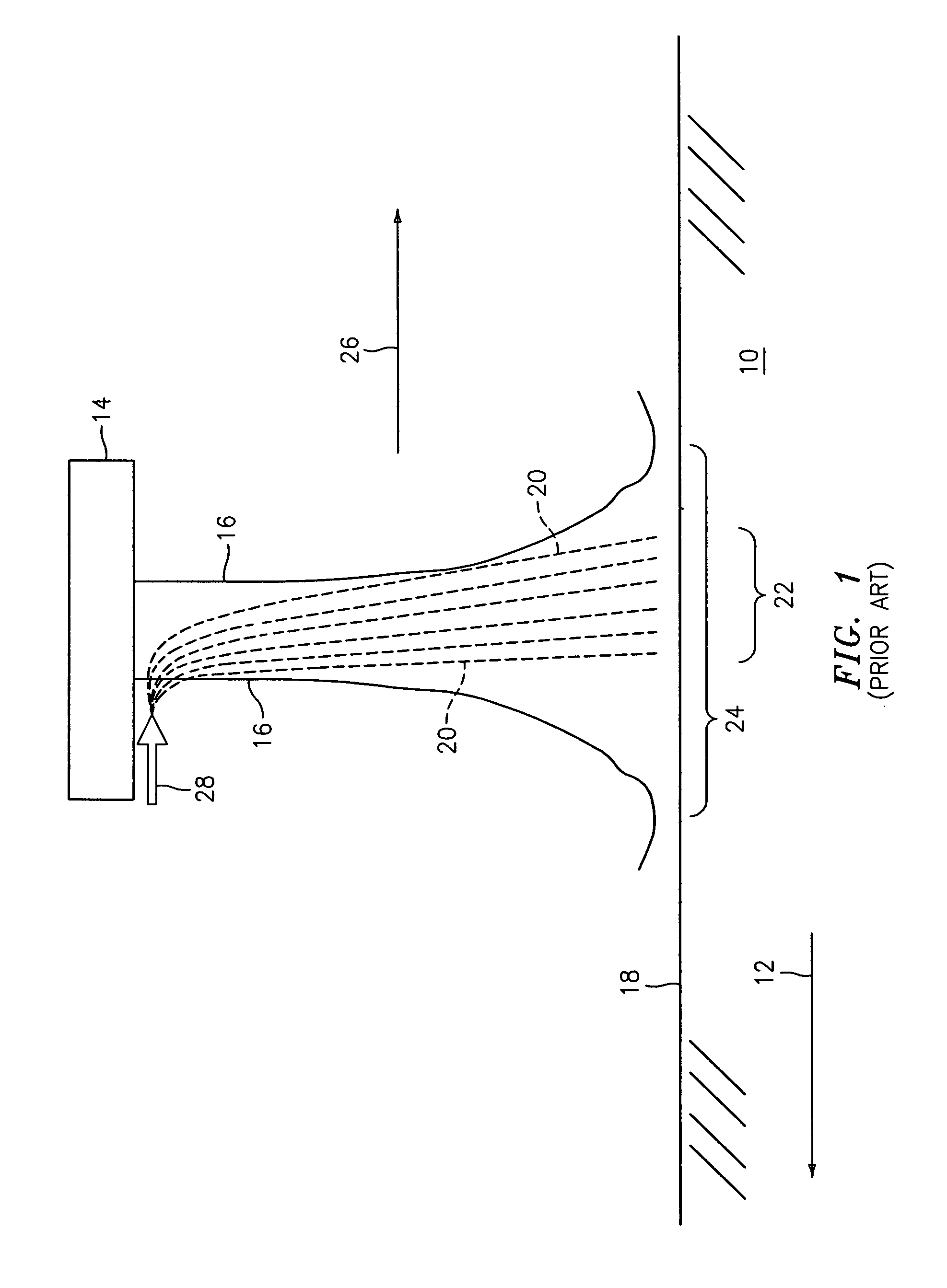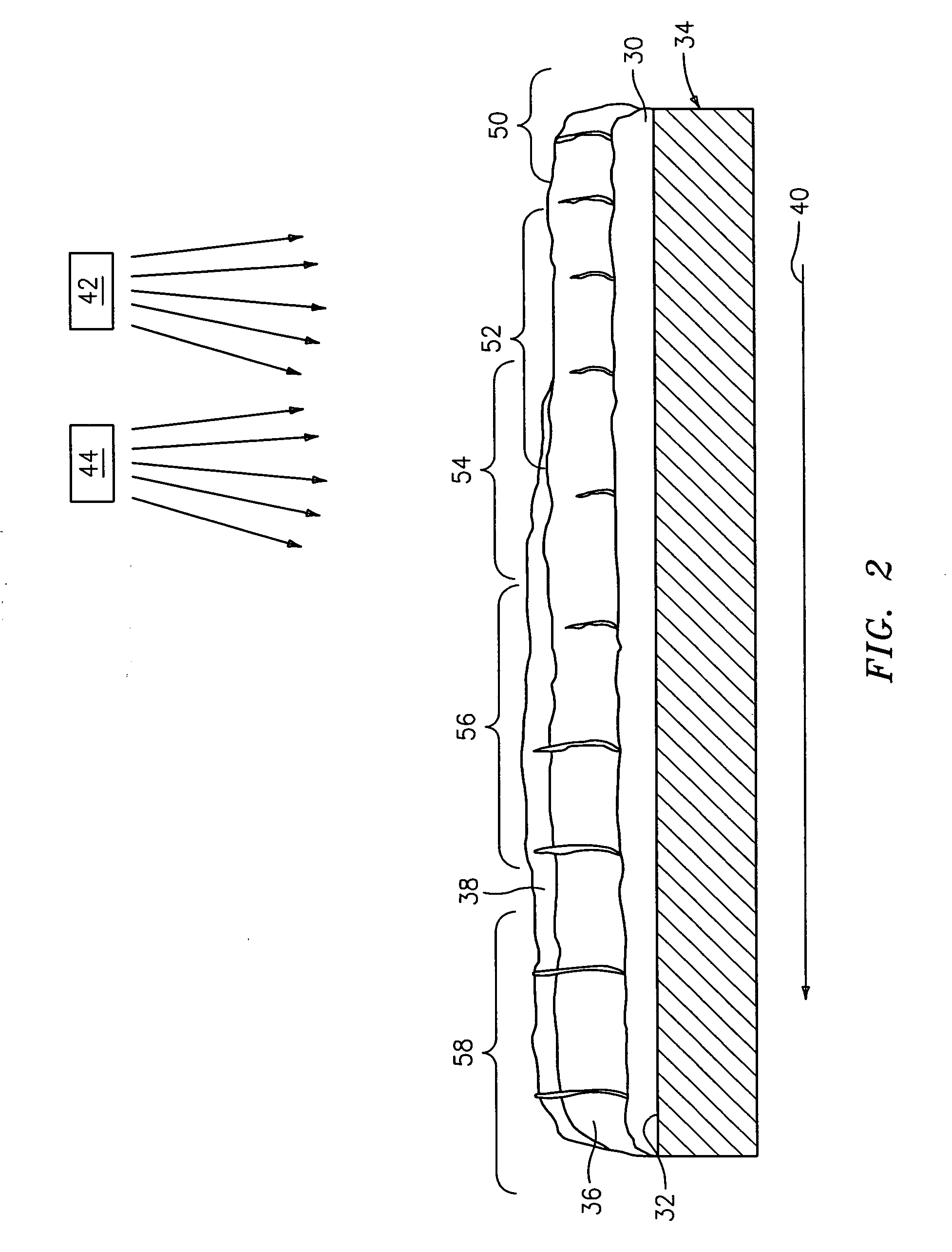Method for microstructure control of ceramic thermal spray coating
a technology of ceramic thermal spray coating and microstructure control, which is applied in the direction of superimposed coating process, liquid/solution decomposition chemical coating, machines/engines, etc., can solve the problems of blade tip detrimental to turbine efficiency, complete elimination of leakage, and designers of gas turbine engines go to great lengths to devise effective sealing structures, etc., to promote vertical crack propagation
- Summary
- Abstract
- Description
- Claims
- Application Information
AI Technical Summary
Benefits of technology
Problems solved by technology
Method used
Image
Examples
Embodiment Construction
[0022]To improve the quality of ceramic coatings, the methods described herein propose to increase the amount of vertical microcracking present within the coating microstructure. Vertical microcracking provides strain tolerance, which prolongs the coating's service life.
[0023]The terms “equilibrium”, “equilibrate” and their related forms are intended to convey the establishment of temperatures and thermal gradients between the substrate surface and successive coating layers being deposited thereupon in order to promote vertical crack propagation in the coating. During the processes described herein, a repeated cycle of heat flux occurs within the coating layer(s) for a short duration of time, dynamically heating the coating layer surface and causing thermal gradients due to the heat capacities and conductivities of the materials. The thermal gradients are allowed to dissipate over a period of time, for example, as little as a fraction of a second, which causes shrinkage of the depos...
PUM
| Property | Measurement | Unit |
|---|---|---|
| pressure | aaaaa | aaaaa |
| temperature | aaaaa | aaaaa |
| temperature | aaaaa | aaaaa |
Abstract
Description
Claims
Application Information
 Login to View More
Login to View More - R&D
- Intellectual Property
- Life Sciences
- Materials
- Tech Scout
- Unparalleled Data Quality
- Higher Quality Content
- 60% Fewer Hallucinations
Browse by: Latest US Patents, China's latest patents, Technical Efficacy Thesaurus, Application Domain, Technology Topic, Popular Technical Reports.
© 2025 PatSnap. All rights reserved.Legal|Privacy policy|Modern Slavery Act Transparency Statement|Sitemap|About US| Contact US: help@patsnap.com



